Candy
CheeSweet—Swiss Cheese Candy
Wisconsin lumberman Stuart Stebbings wanted to be able to eat candy. But being diabetic, he couldn’t. So, in the mid-1950s he invented “cheese candy,” in which much of the sugar was replaced by cheese. Specifically, Swiss Cheese. He marketed it as CheeSweet. His advertising described the flavor as “delightfully different.”Apparently the American public didn’t take to it, because by 1960 Stebbing’s CheeSweet Company had declared bankruptcy.
The In Too Deep blog notes that CheeSweet did, however, achieve a minor form of literary fame, in that it was mentioned by John Steinbeck in his 1962 book “Travels with Charley: In Search of America.” Steinbeck wrote:

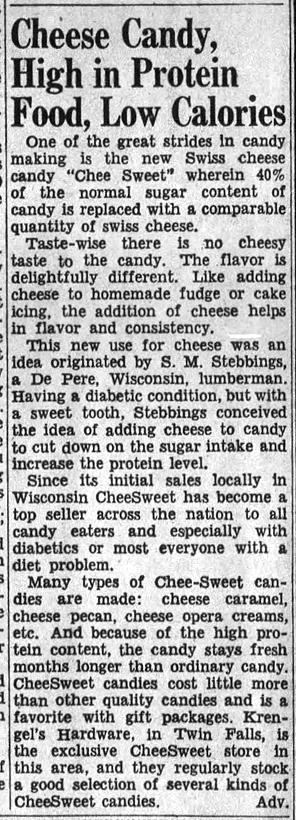
Twin Falls Times-News - Aug 31, 1958
Posted By: Alex - Tue Feb 25, 2020 -
Comments (0)
Category: Candy, 1950s
Immersion in sprinkles
Just a few days ago, on Dec 24, 2019, Maryellis Bunn of New York, NY received patent no. 10,513,862 B2 for a “system, method, and apparatus for simulating immersion in a confection.” The specific confection she had in mind was candy sprinkles. Although the patent extends to include Hershey’s kisses and popcorn.In other words, what she’s patented is the idea of a pool full of fake sprinkles, which people can immerse themselves in.


This makes more sense once you find out that Bunn is the founder of the Museum of Ice Cream, and apparently one of the activities you can do, if you visit her museum (in either New York or San Francisco), is swim in a pool of fake sprinkles. See the video below.
Bunn's Museum of Ice Cream business is reportedly worth around $200 million, and she only started it in 2016. So, while some are mocking her sprinkle-immersion patent as frivolous, she's laughing all the way to the bank.
Posted By: Alex - Wed Jan 08, 2020 -
Comments (3)
Category: Business, Inventions, Patents, Candy
Chewing Gum Stigma
In Oct 2013, the chewing gum company Beldent gathered five sets of identical twins. In each set, one twin was instructed to chew gum while the other sat motionless. Visitors to the Buenos Aires Museum of Contemporary Art were then asked questions about the twins.Their answers indicated that 73 percent of people had a more favorable impression of the gum chewing twins. Beldent claimed that this disproved the "chewing gum stigma."
Though I disagree. I think gum chewing does turn off some people. What the experiment showed was that there's an even greater stigma attached to being expressionless, showing no emotion at all
Posted By: Alex - Tue Dec 03, 2019 -
Comments (0)
Category: Experiments, Psychology, Candy
Gateway Drug
Posted By: Paul - Sat Apr 06, 2019 -
Comments (1)
Category: Business, Advertising, Drugs, Candy, Bohemians, Beatniks, Hippies and Slackers, 1960s
Potato Candy
Which recipe do you prefer? In either case, be sure to whip some up for St. Patrick's Day--or anytime you want tuber-based sweets!Source.
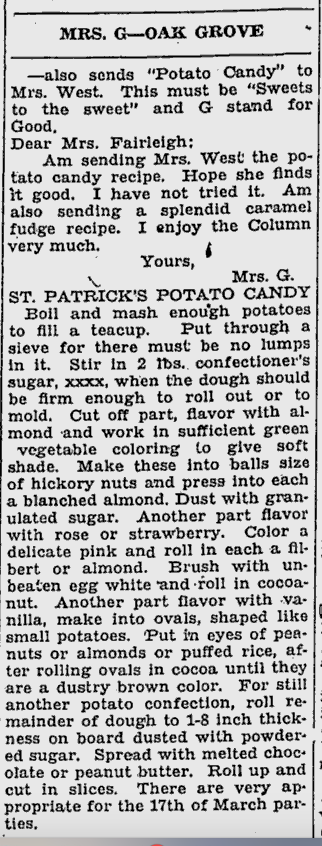
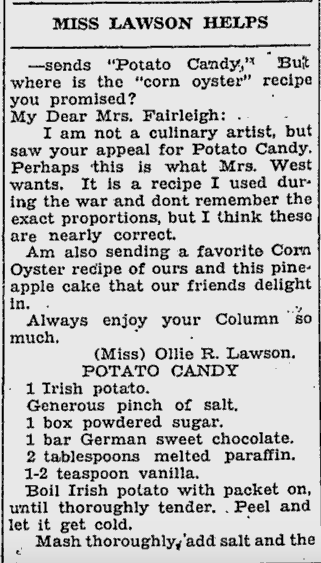
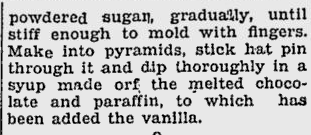
Posted By: Paul - Fri Aug 31, 2018 -
Comments (2)
Category: Candy, 1930s
Non-melting popsicle
Recently announced by the U.K. design firm Bompas & Parr, who say that it took them a year to develop and that it was "designed with global warming in mind," so thatThe technology is based on pykrete, which is a frozen mixture of sawdust and water that resists melting. Pykrete was invented during WWII, and for a while the British Royal Navy was considering building a supersized aircraft carrier out of the stuff.
The non-melting popsicle uses edible fruit fibers instead of sawdust to achieve the same non-melting effect. A company rep said, "The texture of the ice lolly is not far off a regular lolly, though a tad chewy."
More info: fast company
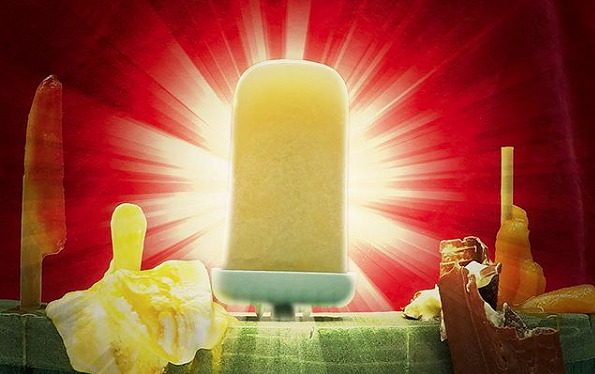
Posted By: Alex - Fri Aug 24, 2018 -
Comments (7)
Category: Food, Candy, Inventions
Fake Flavored Condom Candy
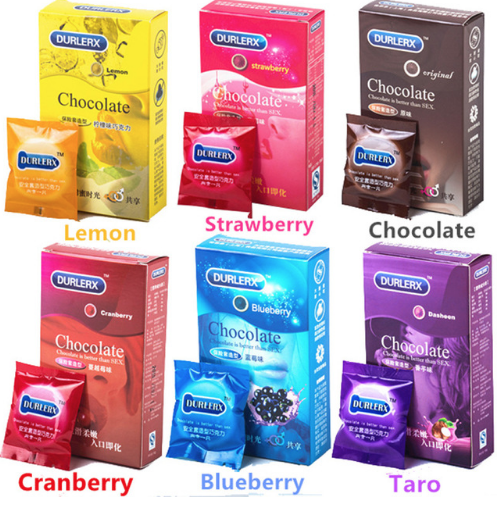
1 Box New Imported Candy Geli White Candies Fun Snack Condoms Durex Chocolate Candy FunFool's Day Tricky Evil Harry Potter Candy
I got nothin'.
Source.
Posted By: Paul - Thu Aug 02, 2018 -
Comments (7)
Category: Sexuality, Foreign Customs, Candy, Asia
Barfo Family Candy
The classic, vomiting-head candy released by Topps in 1990.Drew Friedman tells the story of its creation here.
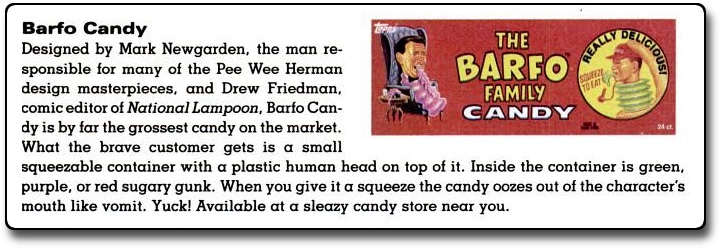


Posted By: Alex - Wed Jul 18, 2018 -
Comments (1)
Category: Candy, 1990s
Rambo Bubble Gum
Raspberry-flavored gum shaped to resemble shrapnel or flak.Went on sale in 1985, as a tie-in with the release of Rambo II.

image source: Candy Wrapper Museum

Wisconsin State Journal - Nov 3, 1985
Posted By: Alex - Wed Apr 11, 2018 -
Comments (2)
Category: War, Candy, 1980s
Follies of the Madmen #342
Nestle's = "Ness-uls" Down Under? Who the heck knew? In any case, girls sure do love chocolate-affiliated horoscopes, don't they?
Posted By: Paul - Thu Dec 21, 2017 -
Comments (1)
Category: Business, Advertising, Products, Candy, 1960s, Women, Australia

| Who We Are |
|---|
| Alex Boese Alex is the creator and curator of the Museum of Hoaxes. He's also the author of various weird, non-fiction, science-themed books such as Elephants on Acid and Psychedelic Apes. Paul Di Filippo Paul has been paid to put weird ideas into fictional form for over thirty years, in his career as a noted science fiction writer. He has recently begun blogging on many curious topics with three fellow writers at The Inferior 4+1. Contact Us |




